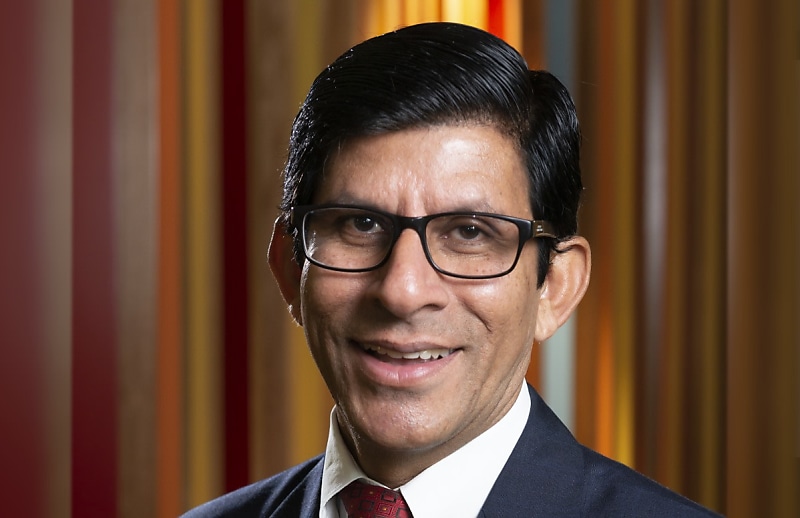***Updated***
Executives with lavish pay packets but weak, self-serving leadership are at the root of the troubles plaguing CPA Australia and CA ANZ, according to an expert in corporate governance and executive pay.
Reza Monem, a Griffith University professor and corporate governance researcher, said the “flashy” image portrayed by both bodies with “glossy magazines, high-flying executives” showed the bodies had lost sight of their purpose.
“At the end of the day, we need to keep in mind that these are not-for-profit enterprises, and their whole purpose is to serve the members.”
He said they were in the worst state he had seen, as a long-time member of both bodies.
“I have been a CA ANZ member since 2015 and a CPA Australia member since 2005. But these issues have only crept up recently,” he said. “When organisations grow too much, they begin to lose sight of their core mission and values, and that’s when the problems start.”
Responding to the criticism, Chartered Accountants ANZ noted that association's membership had increased between the 2016 and 2023 financial years by 17 per cent to 136,730. The employee headcount saw only a small increase of 8 per cent.
"The smaller increase in employees reflects our ongoing determination to be efficient and add value to our members, but also the increased training, education and advocacy needs," the association said.
The country’s two largest professional accounting bodies have also faced heavy backlash in recent months over declining member services and reports of financial losses and staff cuts.
In the last financial year, CA ANZ reported $147 million in revenue but posted a loss of $13 million.
The body earned $90 million in membership fees and spent the same amount on benefits and related costs for its 1,300 employees.
The association said the intentional deficits in the 2022 and 2023 financial years were approved by CA ANZ Board to enable the implementation of its five-year strategy.
"Our financial result stemmed from this investment, not the ‘normal course of business," it said.
"Our underlying business remains strong, as we ran an operational surplus for the period. The strategy was informed by more than 3,000 members and focussed on a much-needed digital transformation to vastly improve the delivery of services to our members."
The association has also faced backlash over rising remuneration for its key executives, with chief executive Ainslie van Onselen earning $940,000, up from $877,500 last year.
CA ANZ said van Onselen's pay is in line with the market and is benchmarked by Mercer Consulting.
"Our CEO remuneration remains in line with the 2017 remuneration awarded to the previous CEO. We are intentionally transparent about what we pay our leaders," a spokesperson for the association said.
CPA Australia’s latest integrated report, published in March, revealed a $12.4 million deficit in 2021, which blew out to $31.3 million the following year after spending overran by more than 15 per cent to $201.2 million.
The revelations were met with disapproval on social media, with commenters accusing the association of failing to “live within its means” and alleging executives rewarded themselves with pay rises while short-changing members.
In response to reports of CPA Australia laying off at least 60 to 70 of its 600-plus employees to stem losses, one critic said: “What on earth would that many staff do? I am certainly glad I resigned when the first lot of "rot" occurred.”
Mr Monem said it was “farcical and laughable” that accounting bodies would incur such inordinate losses in their normal course of business. “This is unacceptable to the membership. Members are duly outraged, and I can't really blame them.”
He said the bloated finances and corporate excess observed in both bodies were “manifestations of agency costs”, an academic concept that described the conflicting interests of executives and members, and a feature typical of poorly performing organisations.
“Both theory and robust empirical evidence suggest that executive pay is high in those organisations where governance is weak and agency costs are high—managers not doing the work but wanting high salaries, a good lifestyle, building an empire but not necessarily adding value. This is a pattern we have observed in both CA ANZ and CPA Australia.”
“If you look at both professional bodies, they want to portray a very flashy glamorous image and lifestyle: glossy magazines, high-flying executives. But what is the justification of a million-dollar CEO in a professional body?” he asked.
Additionally, the issues of financial losses, member dissatisfaction and staff cuts were all interrelated, he said. “They all suggest poor governance, poor leadership and losing focus of the core business mission.”
Not-for-profit enterprises, like CA ANZ and CPA Australia, should exist to serve their members, he said, and “high-paying, fat cat executives” engaged in “self-dealing behaviour” needed to re-evaluate how they were creating value to justify ever-increasing membership fees.
The fees, Mr Monem said, “weren’t cheap”, for him, but still necessary to maintain accreditations as an academic, despite not being a practicing accountant. “I just paid my CPA membership fees recently. Last year I paid $790, and this year I paid $837.”
Indeed, from 2020 to 2023, CPA Australia’s application fees jumped from $180 to $212, and renewal fees rose from $720 to $837 for associates or CPAs over the same period.
According to Mr Monem, the flat fee comprised almost 1 per cent of an average accountant’s salary, and was “a lot of money” compared to other professional bodies, such as the Royal Australian College of General Physicians which used a fairer, means-tested fee structure based on a member’s total income.
Despite growing calls for a merger of the two accounting bodies, Mr Monem cited the risks of creating a bloated “monopolist” without addressing underlying issues. “One could argue that with multiple professional bodies, at least in theory, there is some competition to attract members and provide better service,” he said.
Instead, he said the bodies should control their expenses with “shoestring budgets” and operate on a “lean employee base”.
Greater accountability to members would also be needed to minimise agency costs. “Board members need to be elected directly instead of their current selection process which involves councillors voting on members’ behalf,” he said.
“If you give power back to the members, that will really address a lot of the anger.”

 Login
Login







